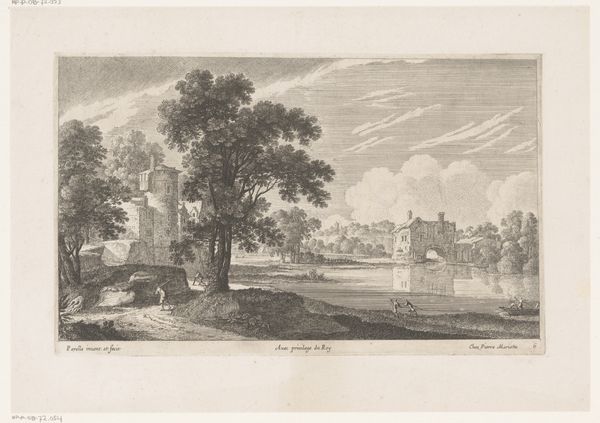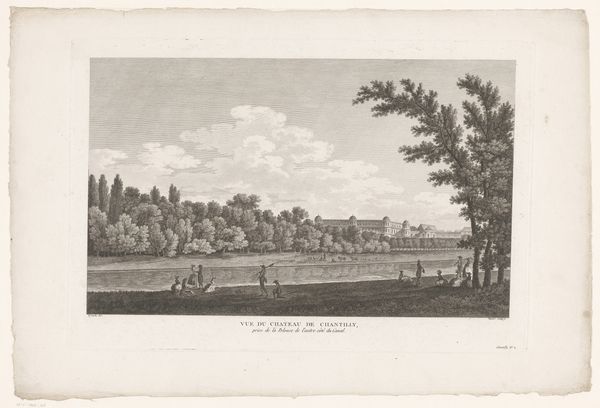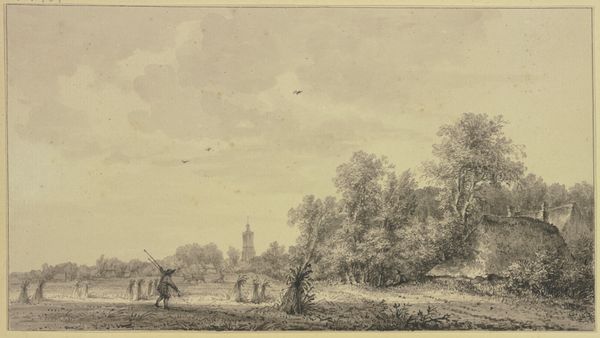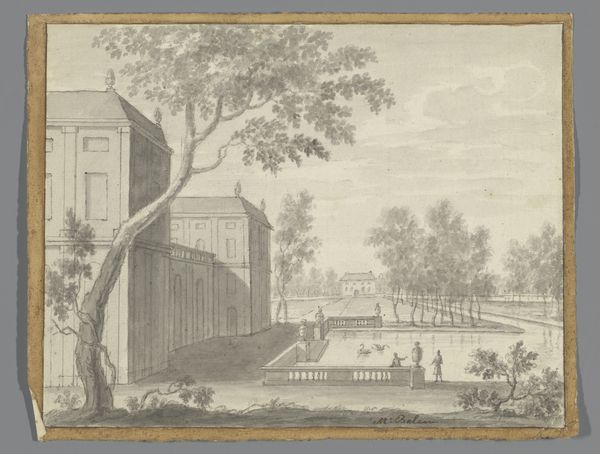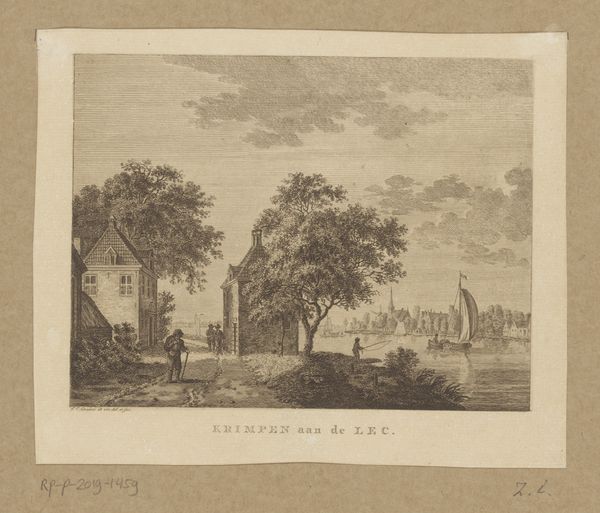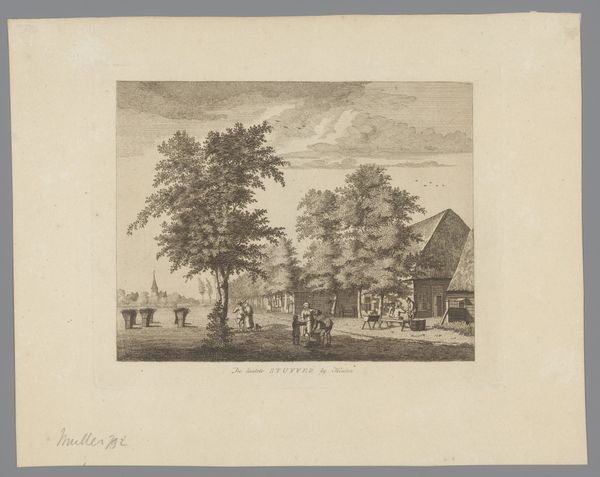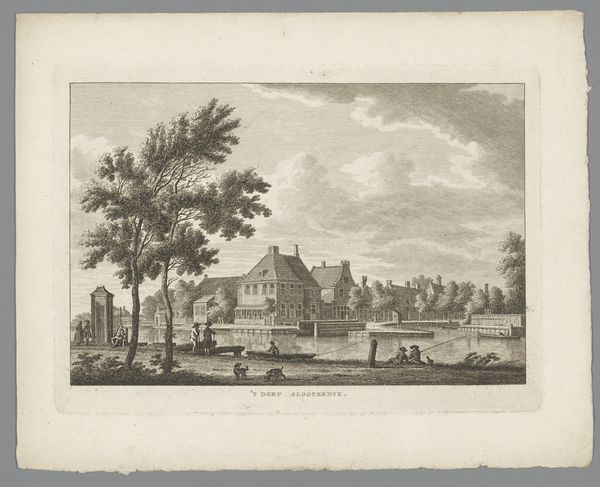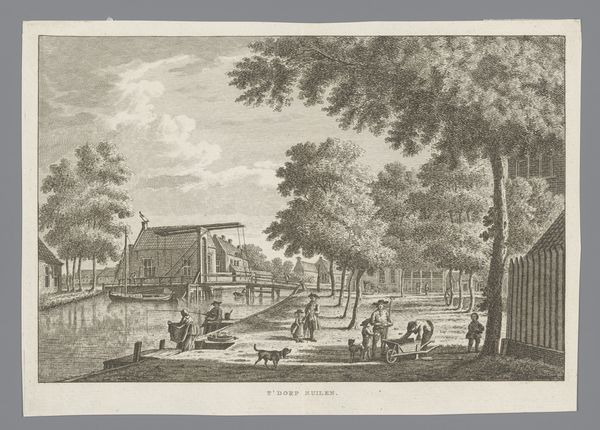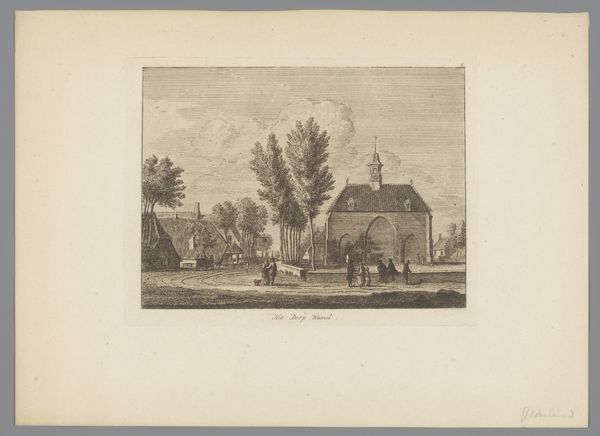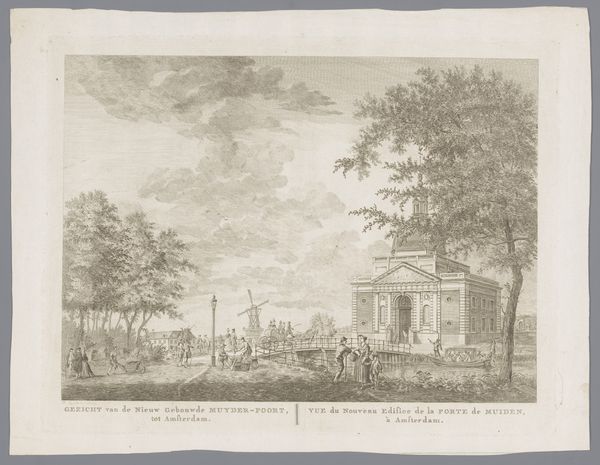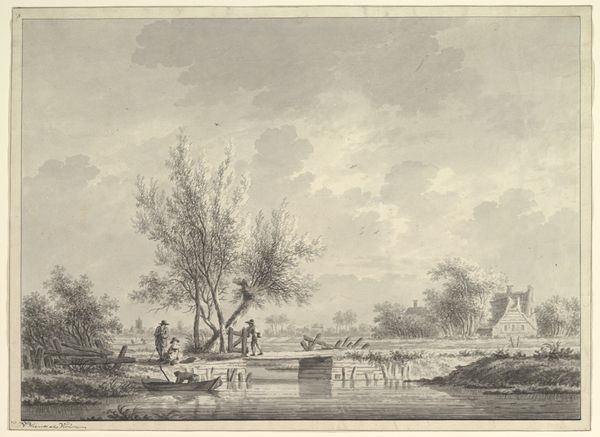
drawing, paper, ink
#
drawing
#
landscape
#
paper
#
ink
#
realism
Dimensions: height 300 mm, width 442 mm
Copyright: Rijks Museum: Open Domain
Editor: This is "View of Wijk bij Duurstede" by Nicolaas Wicart, created sometime between 1758 and 1815. It's an ink drawing on paper. It feels very serene, almost like a memory of a quieter time. What do you see in this piece? Curator: I see the Dutch landscape, not merely as a geographical space, but as a reflection of the Dutch identity being formed. The low horizon, the emphasis on the sky, the presence of windmills...These elements evoke a sense of perseverance and adaptation. Editor: Perseverance? Curator: The Dutch have a long history of managing water, of literally creating land where there was none. Windmills were crucial to that. They symbolize ingenuity and a constant struggle against the elements. Note how small the human figures are relative to the landscape itself; it’s symbolic. Editor: Ah, so it's not just a pretty picture, it's about the relationship between people and the environment. I hadn't thought of it that way. Are there other symbolic things happening? Curator: Consider the light. It's soft, diffused. Light often signifies enlightenment, or truth revealed. What “truth” might be hinted at here? Could it be the harmony – or perhaps the delicate balance – achieved through the industriousness of the Dutch people? Even something as humble as the smoke rising from the chimney speaks to home and hearth, and of a community persisting. Editor: So the landscape itself is a symbol. I’m so used to thinking of symbols as, like, mythological creatures. It’s interesting to see how everyday things can carry weight too. I will have to start observing with new eyes! Curator: Exactly. Symbols are everywhere, woven into the fabric of our world, waiting to be deciphered. This drawing offers a powerful glimpse into how a culture represents itself through its surroundings.
Comments
No comments
Be the first to comment and join the conversation on the ultimate creative platform.
